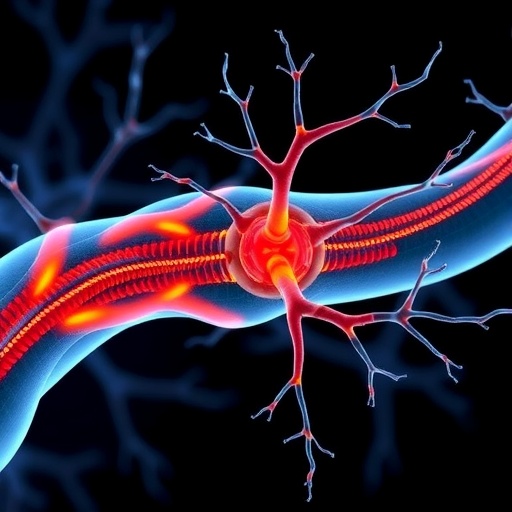Respiratory disorders represent a significant and rapidly progressing health threat in canine patients, frequently leading to critical outcomes including cardiac arrest. The urgency and severity inherent to these conditions demand swift clinical decision-making supported by reliable and accurate assessments of disease severity. While human medicine benefits from well-established scoring systems that integrate physical examinations, blood parameters, and respiratory function metrics to prognosticate outcomes, veterinary medicine has yet to develop broadly validated tools beyond respiratory function tests for such assessments. This gap in veterinary diagnostics has motivated researchers to seek novel biomarkers and clinical indicators that could refine prognosis and therapeutic strategies for dogs afflicted with respiratory ailments.
In a pioneering study, researchers at Osaka Metropolitan University have undertaken an observational analysis to identify clinical and hematological variables predictive of short-term mortality in dogs presenting with respiratory distress. Led by Associate Professor Toshiyuki Tanaka and Dr. Muryo Miki, the team meticulously reviewed the medical records of 133 canine patients admitted to an emergency veterinary hospital. These records encompassed comprehensive physical examination findings along with a suite of blood test results, facilitating a multifaceted inquiry into the prognostic landscape of respiratory disorders in dogs.
The investigative cohort was stratified into survivors and non-survivors based on clinical outcomes, with 105 animals surviving and 28 succumbing to their conditions. Statistical analyses revealed substantial differences between these groups in a constellation of vital signs and laboratory parameters. Notably, heart rate and body temperature showed significant variation, underscoring the importance of systemic physiological status in the progression of respiratory disease. Hematological markers, including white blood cell counts, further distinguished outcomes, reflecting the inflammatory state and immune response reflective of underlying pathophysiology.
.adsslot_Kb51WqDVCt{ width:728px !important; height:90px !important; }
@media (max-width:1199px) { .adsslot_Kb51WqDVCt{ width:468px !important; height:60px !important; } }
@media (max-width:767px) { .adsslot_Kb51WqDVCt{ width:320px !important; height:50px !important; } }
ADVERTISEMENT
Among the biochemical parameters evaluated, glucose and blood urea nitrogen (BUN) levels emerged as meaningful indicators, likely representing metabolic and renal responses to systemic distress. Elevated serum lactate levels were also significantly correlated with adverse prognosis, consistent with the established role of lactate as a marker for tissue hypoxia and perfusion deficits. However, the most compelling finding of this research centered on the elevation of phosphate concentrations in the non-survivor group, indicating a previously underappreciated prognostic biomarker in canine respiratory disease.
Hyperphosphatemia, while traditionally monitored in other contexts such as renal failure, has not been extensively studied in relation to respiratory pathology in veterinary patients. This newfound association mirrors observations in human critical care, where increased phosphate levels often correlate with poorer outcomes due to cellular damage, metabolic dysregulation, and impaired organ function. The present study is the first to systematically identify elevated phosphate as a potential harbinger of mortality in dogs with respiratory compromise. This discovery opens new avenues for early risk stratification and tailored management in veterinary emergency settings.
The accessibility and ease of measurement of the identified indicators—including phosphate, heart rate, body temperature, and routine blood parameters—suggest that they can be readily incorporated into clinical workflows across a wide array of veterinary facilities. This accessibility underscores the translational potential of the findings to improve bedside prognostication without necessitating specialized or costly diagnostic technologies, thereby enhancing veterinary care universally.
Associate Professor Tanaka emphasized the necessity for further granular research, highlighting that respiratory disorders encompass a diverse spectrum of diseases with distinct etiologies and pathophysiological mechanisms. Targeted studies focusing on individual disease entities will be crucial to refine and validate these preliminary findings. Concurrently, understanding the pathogenesis underlying the elevation of phosphate in respiratory distress remains a critical research objective, as elucidating these mechanisms may unlock novel therapeutic targets.
Dr. Miki underscored the practical significance of the study’s results, noting that these prognostic markers can facilitate rapid clinical decision-making and optimize treatment allocation, ultimately enhancing survival rates. Given the critical time constraints and complexity of managing respiratory emergencies in veterinary practice, such biomarkers offer valuable tools for improving patient outcomes and guiding conversations with pet owners regarding prognosis.
This study’s publication in the open-access journal PLOS One ensures broad dissemination within the scientific and veterinary communities, promoting cross-disciplinary dialogue and encouraging the integration of these findings into clinical protocols. The research exemplifies the fruitful convergence of veterinary clinical medicine, emergency care, and translational research, paving the way for innovations that bridge animal and human health perspectives.
Respiratory diseases remain a substantial cause of morbidity and mortality in canine populations worldwide, underscoring the global relevance of this research. By advancing the understanding of accessible prognostic markers, the Osaka Metropolitan University team contributes critical insights that may enhance veterinary emergency and critical care practices. This work sets a foundation for future studies that could incorporate these indicators into standardized scoring systems akin to those employed in human medicine, promoting evidence-based therapeutic interventions.
Looking forward, the integration of such biomarkers with advanced diagnostic modalities—such as imaging, molecular diagnostics, and respiratory function tests—holds promise for creating comprehensive and nuanced prognostic frameworks. These tools will enable veterinarians to tailor interventions to individual patients’ clinical trajectories better, potentially reducing mortality and improving quality of life among dogs afflicted with respiratory disorders.
In summary, the identification of serum phosphate as a novel and significant prognostic indicator in canine respiratory distress represents a breakthrough in veterinary critical care. Coupled with traditional vital signs and basic blood tests, this marker enhances the clinician’s ability to rapidly and accurately assess disease severity and forecast outcomes. The study underscores the imperative for continued investigation into the biochemical pathways at play and supports the translation of human medical insights into veterinary contexts for the benefit of animal health.
Subject of Research: Animals
Article Title: Predictive value of physical and blood examination findings for short-term mortality in dogs with respiratory disorders
News Publication Date: 17-Jul-2025
Web References:
http://dx.doi.org/10.1371/journal.pone.0328797
References:
Tanaka T., Miki M., et al. (2025). Predictive value of physical and blood examination findings for short-term mortality in dogs with respiratory disorders. PLOS One. DOI: 10.1371/journal.pone.0328797
Image Credits: Osaka Metropolitan University
Keywords: Canine respiratory disorders, prognostic biomarkers, phosphate, veterinary critical care, emergency veterinary medicine, blood tests, mortality prediction, clinical indicators, observational study
Tags: biomarkers for canine healthcanine respiratory disordersclinical decision-making in veterinary medicineemergency veterinary carehematological variables in dogsmortality risk assessment in dogsnovel therapeutic strategies for canine respiratory conditionsobservational study in veterinary researchprognostic indicators for dogsrespiratory distress in dogsshort-term mortality in canine patientsveterinary medicine diagnostics





